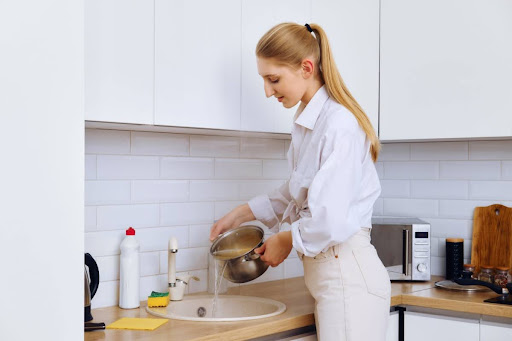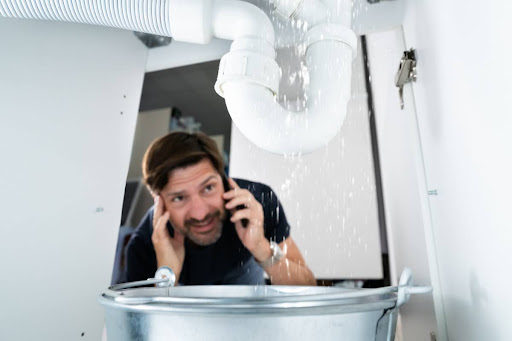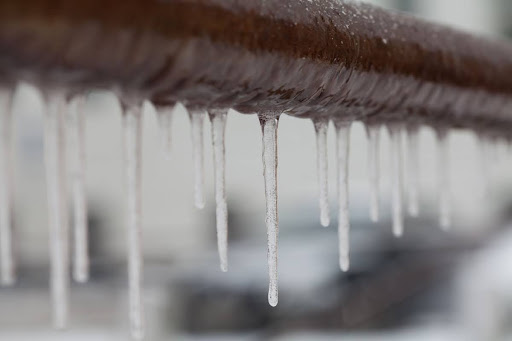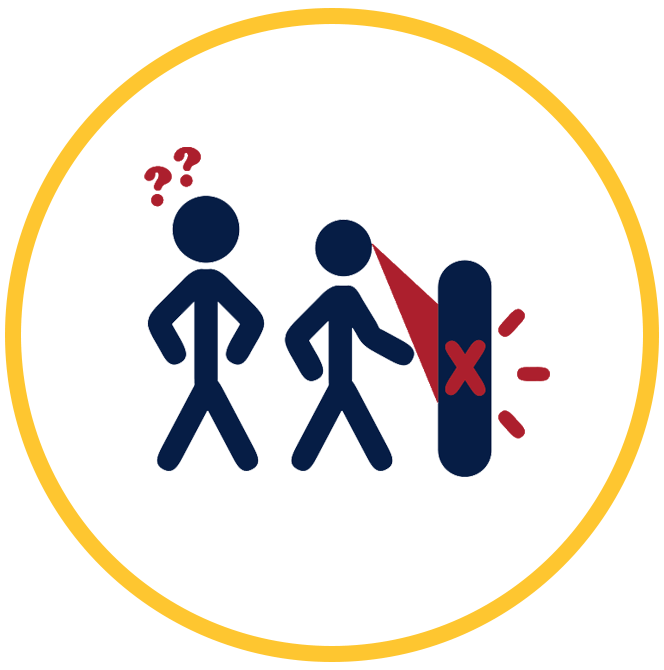Home is the one place where the sounds around you are under your control. You might hear the hum of a dishwasher, the bubbling of pasta water on the stove, or the faint splash from the kids taking a bath. These noises feel normal, even comforting. But then, out of nowhere, a loud banging echoes through your walls when you turn off a faucet. That startling thud doesn’t belong, and it can leave you wondering if something in your plumbing is about to break. That noise has a name: water hammer.
Many households deal with this issue, and with a better understanding of what it is and how to stop it, you can protect your plumbing and bring quiet back to your home.
What Is Water Hammer, and Why Does It Happen?
In simple terms, water hammer is a shockwave inside your pipes. Imagine water moving quickly through a pipeline and then suddenly stopping when a valve closes. That abrupt stop has nowhere to go, so it creates a loud hammering noise that rattles the plumbing.
If you’re trying to understand what water hammer is, think of it like slamming on the brakes while driving. The momentum jolts everything forward. In plumbing, that jolt is the water’s kinetic energy bouncing against pipes, fittings, and fixtures. Over time, this repeated force can loosen connections, create leaks, and wear down your plumbing infrastructure.
Signs You're Dealing With Water Hammer
If you’re unsure about what you are hearing, these signs often point to water hammer:
- A loud thud or knock after turning off a faucet or shutting down an appliance.
- Pipes that visibly move or vibrate during the noise.
- Drops in water pressure shortly after the banging.
- Unexplained leaks or water drips in your plumbing system.
- Repeated noise occurs whenever appliances like washing machines complete a cycle.
If you notice these signs, it’s worth taking the time to investigate further. The sooner you act, the less risk of hidden damage.
What Is the Most Common Cause of a Water Hammer?
There are actually several causes of water hammer that can show up in homes. Let’s take a closer look at each.
Quick-Closing Valves
Dishwashers and washing machines use valves that snap shut almost instantly. When this happens, the moving water has nowhere to go, which creates a loud, hammering noise. These fast-closing valves are one of the most common causes of water hammer and often the first area plumbers check.
High Water Pressure
Excessive pressure in your water supply makes hammering worse. The stronger the pressure, the bigger the shock when water suddenly stops. Adjusting or replacing a pressure regulator is a reliable way to solve this issue and learn how to fix water hammer.
Poor Pipe Support
Loose or poorly supported pipes can amplify hammering. The vibration from the shockwave causes pipes to rattle against walls or floors, making the noise louder. Adding clamps or bracing helps, but the underlying hammer must still be fixed.
Failing Pressure Regulator
A faulty pressure regulator is also one of the most common causes of water hammer. This problem can let pressure spike unpredictably, setting the stage for hammering. These fluctuations not only create banging pipes but also stress fixtures and water heating systems. Repairing or replacing the regulator is often necessary.
Air in the Lines
Air pockets inside the pipeline can disrupt smooth water flow. As the air shifts, it creates turbulence that produces knocking noises. Draining the system usually clears out the trapped air and restores quiet plumbing.
How Long Does Water Hammering Last?
The sound of water hammer usually lasts only a second or two, but the effects on your plumbing are longer-lasting.
The truth is that every single bang puts stress on your pipes. Over months or years, those small impacts can cause serious wear. Think of it like tapping the same spot on a wall over and over. Eventually, the material weakens. That is exactly what happens inside your plumbing when water hammer is ignored.
How to Fix Water Hammer
The good news is that there are reliable solutions. If you’ve been searching for how to fix water hammer, here are common methods plumbers recommend:
- Install Water Hammer Arrestors: These small devices act like shock absorbers, reducing noise and vibration.
- Check Your Pressure Regulator: High water pressure contributes to hammering. Adjusting it to a safe level often helps.
- Add an Air Chamber: A vertical pipe with trapped air can cushion sudden changes in water speed.
- Replace Fast-Closing Valves: Modern valves with slower shutoffs reduce the force behind the pulse.
Although these steps can help you get a grasp on how to fix banging pipes, the resolution isn’t always that simple. Sometimes, the problem runs deeper. For example, if your system has aging pipes, poor piping and plumbing fitting layouts, or leaks in hidden places, you’ll need a professional inspection.
The Bigger Picture of Plumbing Health
Sometimes water hammer points to larger plumbing concerns. For example, a hidden leak beneath your foundation could affect pressure levels, creating unusual pipe behavior. If you suspect this, you may want to call G.F. Bowman for slab leak repair in Lebanon and Harrisburg, PA.
Other times, outdated installations or worn fittings are the real issue. That is why consulting experienced plumbers is so important. They can spot things the average homeowner would never notice and recommend repairs that prevent long-term damage.
Quiet Your Home With G.F. Bowman
Since 1967, G.F. Bowman has been the go-to choice for families across Harrisburg, PA who want plumbing repairs done right. Our team knows how to fix water hammer before it turns into bigger problems.
At the end of the day, home should be a comfortable, predictable place. That means no surprise bangs echoing through the walls at night. Our plumbers in Lebanon and Harrisburg, PA, have extensive experience and a reputation for reliable, honest service. Contact us today to schedule your plumbing service!








 1..
1..
 2..
2..
 3..
3..
 4..
4..
 5..
5..
 6..
6..